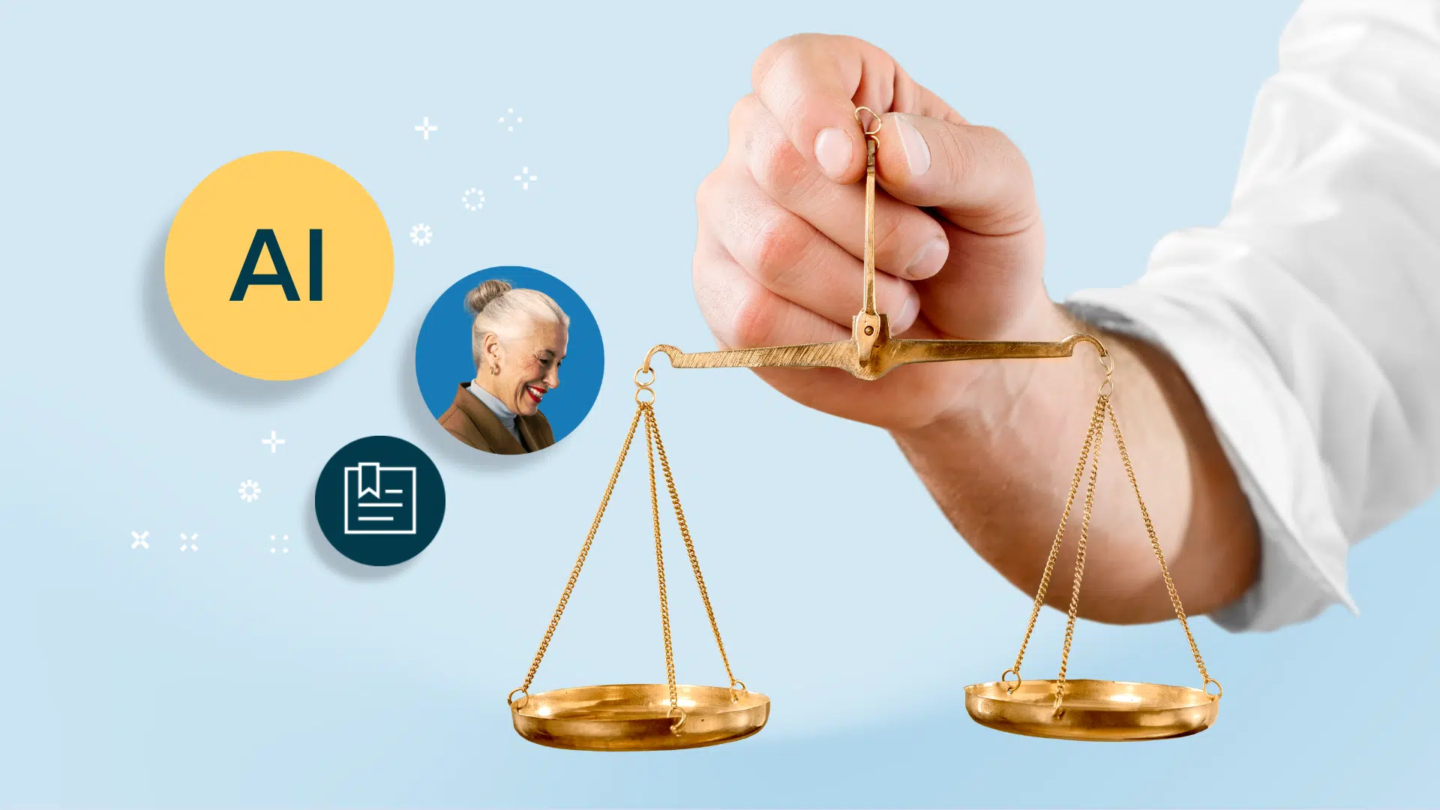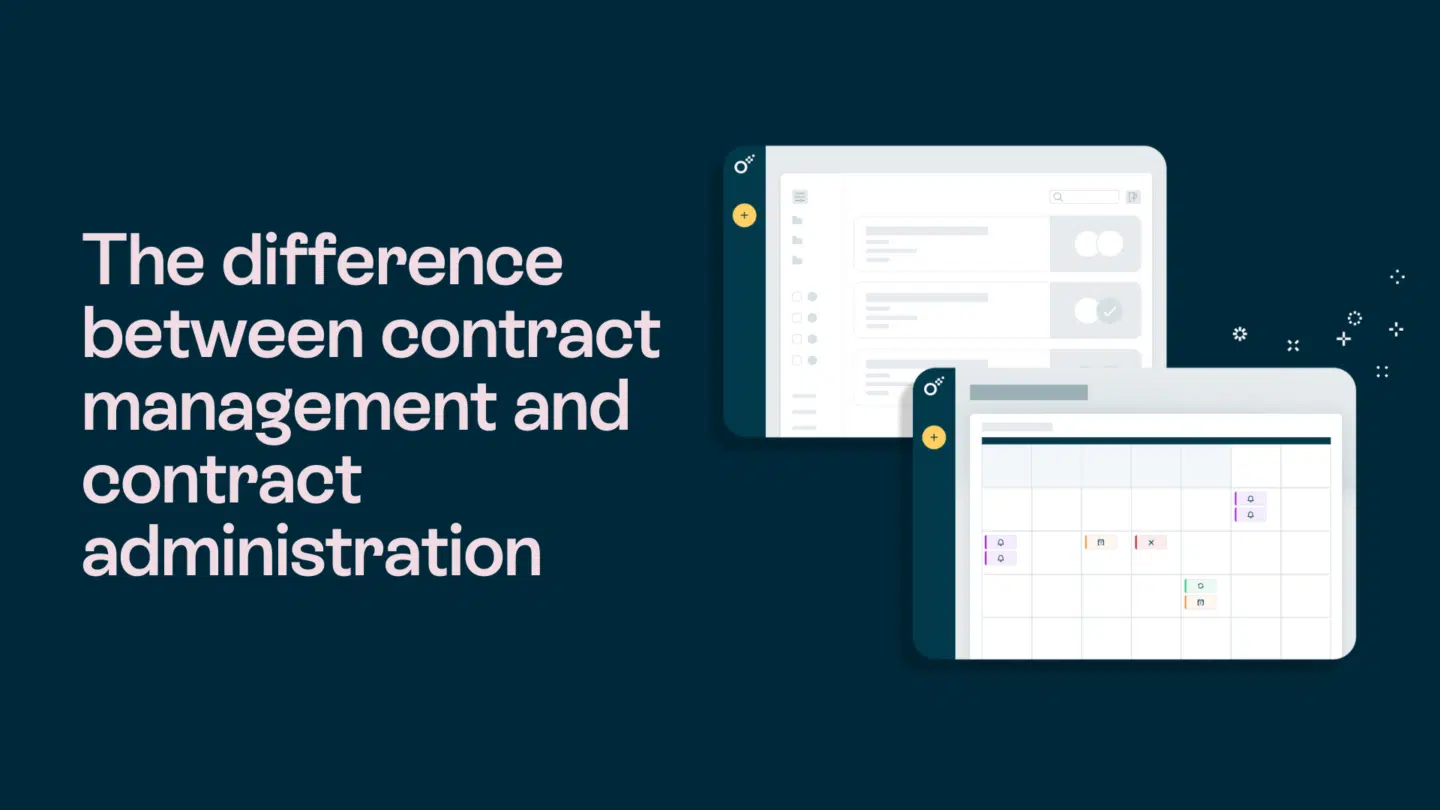The contract management space is undergoing rapid transformation, driven by technological advancements and the growing demand for efficiency and precision. According to Gartner, by 2027, 50% of organizations will use Artificial Intelligence (AI)-enabled tools to support supplier contract negotiations through advanced risk analysis and editing capabilities. This statistic shows the critical role AI and other innovative technologies will play in framing the future of contract management.
In this article, I will discuss the top five contract management trends for 2025, which are reshaping how contracts are created, negotiated and managed. Plus, you’ll find some insights into how businesses can adapt to these changes.

1. Increased use of digital tools and services
We have observed a rapid increase in new customers and their use of SaaS tools, including the Oneflow platform, when knowledge workers were forced to work from home in 2022. Oneflow is a digital contract management automation platform that makes the business contract management process easier and swifter. It serves for creating, negotiating and signing contracts and uses AI to reduce time and effort connected with contract workflows.
According to McKinsey’s research, the 2020 pandemic accelerated the digitalization of customer and supply-chain interactions and internal operations by three to four years. The share of digital or digitally enabled products in company portfolios advanced by seven years.
Fast-forward to 2025, this trend continues to grow. Especially GenAI solutions are transforming how procurement organizations operate. They help procurement teams play a bigger role in supplier contract negotiations by using automated tools that follow legal guidelines and past agreements. They also make the process faster by spotting potential risks and suggesting ways to reduce them.
2. Digitization within the management team
E-signing became the gateway to further digitization measures. In many companies, it is now enhancing identification and onboarding processes. According to Forrester, this emphasis shift in the use of e-signatures will integrate emerging technologies and enhance existing ones to prioritize speed, usability and security, with eIDS playing a key role in this transformation.
Today digital tools continue to transform other areas of contract management. Data analytics provide useful insights for better decisions, and AI and automation reduce manual work and make processes more efficient. Cloud platforms make teamwork easier by allowing smooth communication and file sharing.
Read more: Top 9 benefits of digital contracts
3. Tougher requirements for security and data retention
With the sharp increase in data volumes comes a growing pressure to handle the data properly. We know it’s not always easy to navigate the jungle of regulations.
In the context of digital contract processes, integrating security measures like two-factor authentication and maintaining detailed audit trails are effective strategies that enhance cybersecurity and ensure data privacy. These practices help safeguard sensitive information and help organizations adhere to data protection regulations. GDPR requires organizations to respect people’s rights, like deleting their data if requested. This means they need systems to remove old or unnecessary data automatically.
Gartner notes that best practices for efficiently handling data integration, quality and metadata management include adopting AI-enabled approaches. This allows organizations to ensure compliance and enhance data security.
An extension of this trend is using blockchain technology to provide a secure and transparent way of managing contracts. They are stored on a decentralized ledger, ensuring that all transactions are tamper-proof, transparent and unchangeable.

4. Shorter time to sign
With digital contract management, the process is not only safer – it’s also considerably faster. Oneflow contract automation helped customers save, on average, four hours weekly on manual contract-related processes. We also saw some significant improvements in signing times, although this varies greatly depending on the contract type. The decision path has become shorter and more efficient.
This observation is concurrent with the Forrester forecast, which anticipates that the accelerated adoption of digital trust solutions, including e-signatures, will inspire vendors to collaborate to meet practical and regulatory demands. This will lead to the development of standardized practices, enhancing both business and consumer confidence in digital signing.
Such a solution is particularly useful when working globally. Signing electronic contracts eliminates the need for printing, signing and scanning multiple versions of the same document.
5. More focus on “all in one flow”
Forrester Research emphasizes that contract lifecycle management (CLM) has evolved into user-friendly platforms that provide flexibility for collaboration across various business areas. This evolution allows companies to scale CLM use cases over time, moving away from single-function applications that lack scalability.
Gartner notes that over 70% of legal leaders plan to implement generative AI solutions in their departments within the next two years. This reflects a desire to improve contract lifecycle management processes, indicating a move towards more comprehensive digital solutions.
These insights underscore a clear trend: organizations are moving away from single-function applications in favor of scalable digital contract management solutions that address the entire contract journey.
Read also: Free online signature maker: A complete guide
6. Signing on multiple devices and contract automation
According to our recent survey, 32% of respondents see the ability to sign contracts on any device as the most important feature for future agreements. Integration with CRM systems on preferred platforms takes second place (28%) on the list of importance.
The ability to sign contracts on multiple devices ensures convenience and accessibility, letting users execute agreements from anywhere. Integrating contract management software into customer relationship management (CRM) or enterprise resource planning (ERP) systems centralizes data and improves internal collaboration. It’s connected with the growing importance of contract automation, as many companies recognize its role in improving operational efficiency and reducing costs.
7. AI-powered contract review
As companies pursue digital transformation, AI-powered contract review is becoming essential for efficiency, risk management and smarter decision-making in procurement and legal departments.
By using machine learning and natural language processing, AI can analyze more contracts faster. It helps to enhance compliance, reduce human error, save time on writing and identify potentially overlooked mistakes.
How can Oneflow help you optimize contract management in 2025?

Oneflow, our contract management software is well-prepared for future contract lifecycle management trends. It provides an adaptable platform, which aligns with the key trends and accelerates the contract lifecycle management processes. It offers features like:
- Centralized contract repository – Store all contracts in a secure, centralized location, making them easy to access and manage. With AI search and advanced filtering capabilities, you can quickly retrieve specific contracts or clauses.
- AI-driven insights – Analyze contracts in bulk using AI Insights, providing your legal teams with immediate due diligence and compliance reports. Oneflow identifies and extracts potential risks, providing a comprehensive overview of the contract portfolio’s health and significantly speeding up the contract review process.
- Automation of contract processes – Automate repetitive tasks like generating, sending and signing contracts. Use free, predefined templates and workflows to save time, ensure consistency and reduce errors.
- Real-time collaboration – Reduce email back-and-forth and speed up the review process by letting multiple stakeholders edit, review and comment on contracts simultaneously.
- E-signatures – Speed up the signing process and eliminate the need for physical paperwork by using legally binding electronic signatures and digital signatures.
- Analytics – Track contract statuses, key dates and performance metrics to gain insights into bottlenecks and areas for improvement.
- Renewal and expiry management – Reduce the risk of missed opportunities or unintentional renewals using automated reminders for contract renewals or expirations.
- Compliance and security – Use encryption and access controls to protect sensitive information. Oneflow ensures your contracts meet regulatory and compliance requirements.
Conclusion
Adopting the innovative solutions highlighted in this article will improve contract workflows, compliance, collaboration and decision-making. Organizations that embrace these trends will be better equipped to navigate the complexities of modern business, mitigate risks and unlock new opportunities.
The future of contract management is dynamic, and staying ahead requires a proactive approach and using proper tools. Try Oneflow and open your organization to these modern trends. This contract management system automates the contract processes from creation to management, providing legally binding e-signatures with various verification methods and offering AI-based dynamic templates and search options to improve contract management and compliance checks.
FAQs
What is the future of contract management?
The future of contract management is shaped by several trends, including digitization, reduced approval times, improved collaboration and AI assistance.
What are the four blocks of good contract management?
A good contract management process revolves around four key pillars:
- Contract creation and development – Understanding requirements and objectives and drafting clear, precise and comprehensive contract terms. This includes incorporating legal and regulatory compliance and managing revisions and negotiations.
- Contract execution – Approving and validating by relevant stakeholders, secure execution through electronic or physical signatures and distribution of relevant contracts for relevant parties for reference.
- Performance management – This stage involves tracking milestones, deliverables and deadlines. It includes managing risks and ensuring compliance with agreed terms and resolving disputes or non-performance issues.
Post-contract management – This includes renewals, terminations or transitions. It’s also about meeting obligations before closing the contract and analyzing performance and outcomes to identify improvements.
What are the six stages of contract management?
The six stages of contract management provide a comprehensive framework for effectively handling contacts throughout their lifecycle. These stages ensure clarity, compliance and successful execution of contractual obligations. Here’s an overview:
- Contract initiation or request – Identifying the need for a contract and outlining the goals and expectations of the parties involved. It includes party identification, needs assessment and preliminary terms and conditions.
- Contract creation or drafting – Producing the first contract document with all terms and conditions.
- Contract negotiation – Reviewing, negotiating and collaborating on the contract terms to ensure they align with the interests of all parties.
- Contract approval – Legal review and securing signatures from authorized representatives.
- Contract execution and administration – Delivering goods or services and meeting contractual obligations.
Contract monitoring, renewal or termination – Ongoing monitoring to ensure compliance, managing amendments and deciding whether to renew, modify or terminate the contract as it nears expiration.
Is contract management in demand?
Contract management is indeed in demand, driven by several factors:
- The growing importance of contract lifecycle management (CLM) – The need for effective CLM systems is increasing as organizations seek to improve efficiency, reduce risks and enhance visibility across their contracts.
- Technological advancements – The integration of technologies like artificial intelligence (AI) and automation is transforming contract management. AI is expected to play a significant role in analyzing risks, obligations and compliance.
Market trends – The adoption of digital tools, smart contracts and stricter security requirements are among the trends driving the demand for effective contract management solutions in 2025.








